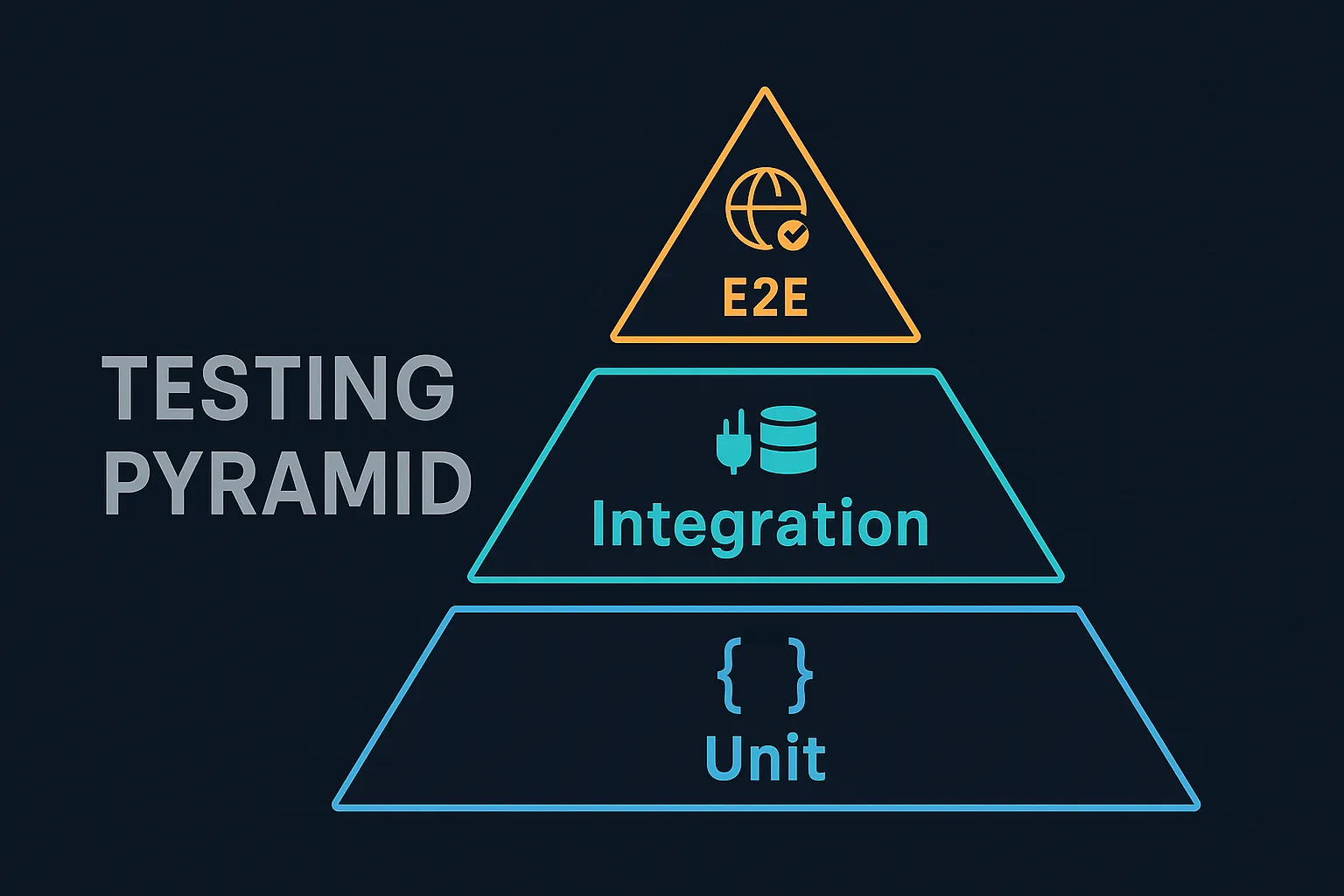Unit, Integration, and End-to-End Tests: Building Confidence in Your Software - Part 1
When building modern software systems, writing tests isn’t just about catching bugs, it’s about creating confidence. Confidence that your logic works, confidence that features integrate well, and confidence that the entire system behaves as expected for real users.
In the world of software testing, three types of tests are most commonly discussed: unit tests, integration tests, and end-to-end (E2E) tests. Each serves a distinct purpose, each has strengths and trade-offs, and together they form the foundation of a reliable testing strategy.
This article provides a comprehensive, language-agnostic breakdown of these three pillars of testing, highlighting their importance, differences, and best practices.
1. Unit Tests: Validating the Smallest Pieces
Definition Unit tests focus on testing the smallest units of code in isolation, typically functions, methods, or classes. The goal is to verify that a specific piece of logic behaves exactly as intended.
Why they matter
- They provide fast feedback since they run quickly.
- They serve as documentation for how a function or module is supposed to work.
- They help catch regressions early, before code reaches higher environments.
Example Scenario Imagine you’re building a shopping cart system. A unit test might check that:
- Adding an item updates the cart total correctly.
- Removing an item decreases the count.
- Discount calculations apply properly.
This test doesn’t care about the database, the API, or the user interface it just cares about whether your calculateTotal(cartItems) function works.
Key Points for Good Unit Tests
- Keep them isolated—no databases, APIs, or file systems.
- Cover both happy paths and edge cases.
- Make them small and fast so they can run frequently.
2. Integration Tests: Verifying Modules Work Together
Definition Integration tests focus on testing how different modules, services, or components interact with each other. Unlike unit tests, they don’t isolate a single function they simulate realistic flows between parts of the system.
Why they matter
- Many bugs don’t occur in isolation but at the boundaries where systems communicate.
- They help ensure that your code modules, services, or APIs play well together.
- They give a higher level of confidence than unit tests but at a higher cost (slower, more complex).
Example Scenario In the shopping cart system, an integration test might check that:
- When an item is added to the cart, it’s saved in the database.
- The updated cart total is correctly retrieved via the API.
- A discount applied in the service layer reflects in the final invoice.
This test involves the database, service logic, and possibly the API layer.
Key Points for Good Integration Tests
- Focus on real-world workflows, not individual functions.
- Use test doubles (e.g., mocks, stubs, in-memory databases) where necessary to keep them manageable.
- Balance depth—don’t turn every integration test into a full E2E test.
3. End-to-End (E2E) Tests: Testing Like a User
Definition End-to-End tests validate the entire system from the user’s perspective. They simulate how a real user would interact with your application, covering everything from the front-end UI to the backend services and the database.
Why they matter
- They catch issues that unit or integration tests miss.
- They ensure the entire flow works in production-like conditions.
- They give the highest level of confidence before release.
Example Scenario For the shopping cart system, an E2E test might:
- Open the application in a browser.
- Log in as a user.
- Add an item to the cart.
- Apply a discount code.
- Proceed to checkout and ensure the final invoice matches expectations.
This test validates everything: frontend, backend, authentication, database, and even third-party services.
Key Points for Good E2E Tests
- Keep them focused on critical user flows (checkout, login, payments).
- Minimize their number since they are slow and costly to maintain.
- Automate them in CI/CD but run them strategically (e.g., nightly builds, pre-release checks).
The Testing Pyramid: How They Work Together
Think of these tests as layers in a pyramid:
- Unit tests form the base (most numerous, fastest).
- Integration tests form the middle (fewer, slower).
- E2E tests form the top (the least, but most comprehensive).
This balance ensures:
- You catch bugs early with unit tests.
- You validate real-world interactions with integration tests.
- You simulate user behavior with E2E tests.
Best Practices Across All Test Types
- Write clear, meaningful test names (e.g.,
should_apply_discount_when_valid_code_provided). - Aim for coverage, not 100% coverage obsession—focus on meaningful tests.
- Automate tests in CI/CD pipelines for consistent feedback.
- Keep tests deterministic—they should pass or fail for the same reason every time.
- Continuously refactor tests just as you refactor code.
Final Thoughts
Good testing is about balance. Unit tests give you speed, integration tests give you realism, and E2E tests give you confidence from a user’s perspective. Together, they help you ship reliable software faster and with less stress.
This article is the first in a testing series where we’ll dive deeper into each type, exploring practical strategies, pitfalls to avoid, and real-world examples.
In the next article, we’ll break down Unit Testing in depth covering patterns, anti-patterns, and practical tips for writing effective unit tests.


